Having settled into my new “studio”, I was inspired to create something that will further improve the living experience (at least aesthetically) at our new place. I 3D printed face plate for outlet/light switch to replace the one that didn’t quite fit because of the trim:
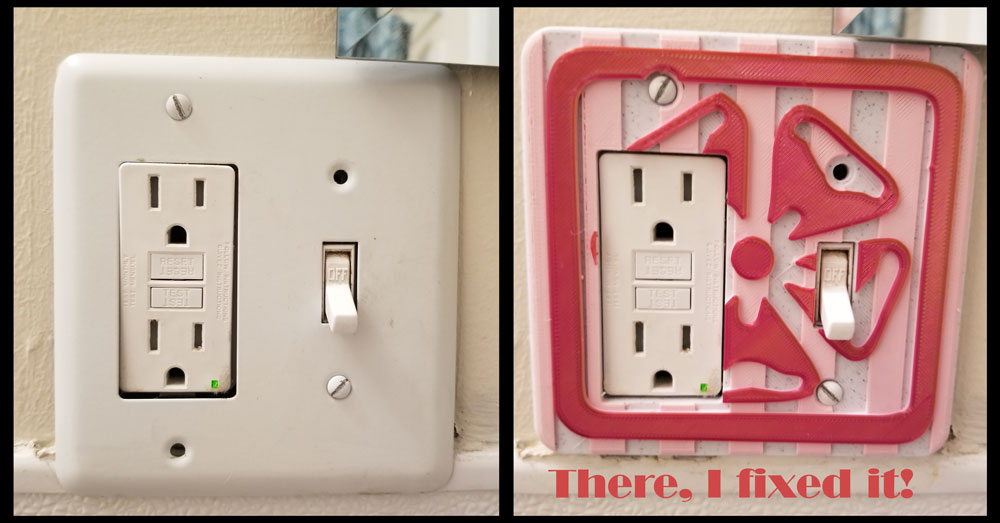
And figured out a way to 3D print photographs, but I’ll post about that later, since I’m still experimenting with the technique. Then, having a new dining table, I thought it would only be reasonable to adorn it with something handmade: placemats! The designs I gravitated towards are actually made out of painted wooden planks, but I don’t know what that kind of art is called. I experimented in Illustrator with the designs:

The top right design won, thanks to a few more votes from the family members. I made a pattern for it and printed it out. I thought I would be able to come up with a shortcut where different colored fabrics are joined together first and then the strips were cut, but gave up on that, because I would end up with right triangles of discarded fabric as a result of 45° angle of the seams. Since all the strips are 1/2, 1 or 2 inches wide (plus half an inch for seam allowance), I would cut the strip first and then use the cut out pattern as a guide to place the ruler and make the 45° cut. In the first image below you can see how this resulted in stacks of pieces of strips. For 4 placemats, I needed to have 16 pieces of each patch, and because all the fabric I used was solid color, all these pieces are the same. If I were to use print fabric, I would need to cut 8 pieces with pattern right side up, and 8 pieces with right side down. In the second image, you can see that I drew a line at a quarter inch from the edge so that I could precisely align the fabric, but I did that only in the beginning, because I realized that I can eyeball this and the piece of marking tape I have on the machine (seen in third photo) was sufficient to help me check that the seem is going to be in the right place. Not drawing the line sped up the work significantly. Further down, you can see the progress of piecing. Each placemat had two different pairs of quarters and once they were done, the trickiest part was to connect them all together so that in the middle 8 seams are coming together in a single point. I would use pins to ensure the seams are aligned. I chose the backing fabric that had similar colors to the patchwork, and so we can flip the placemats around if one side becomes dirty, or boring.
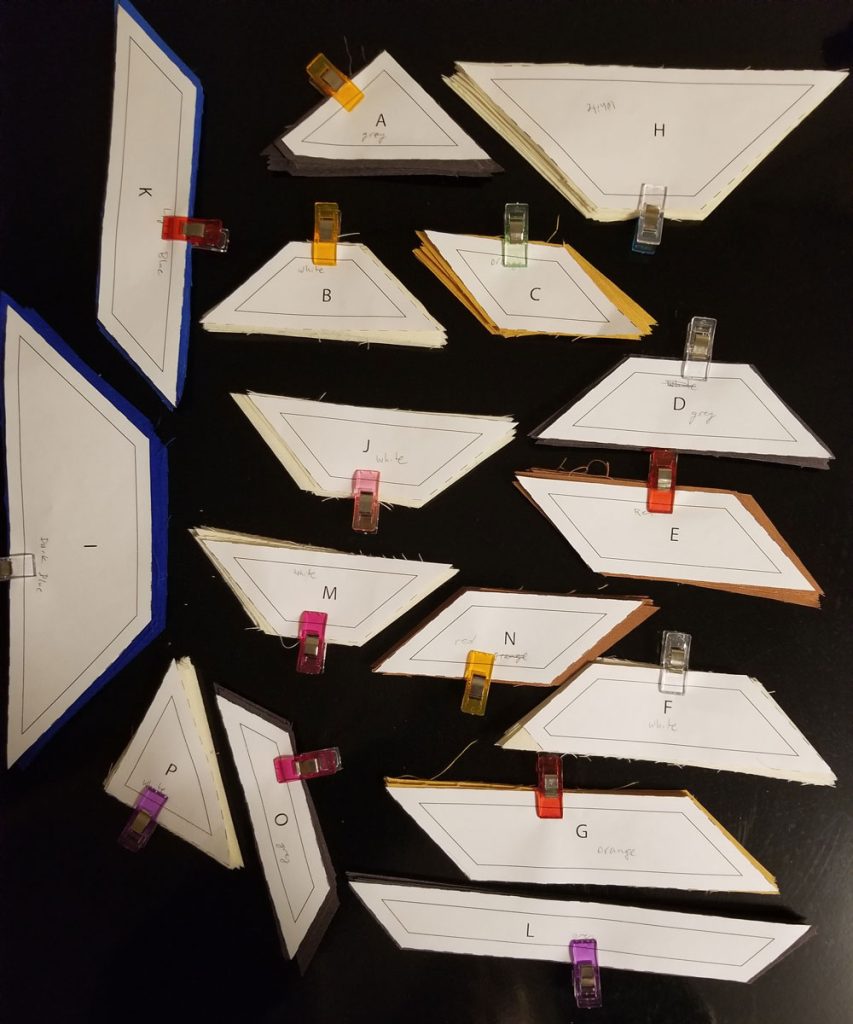
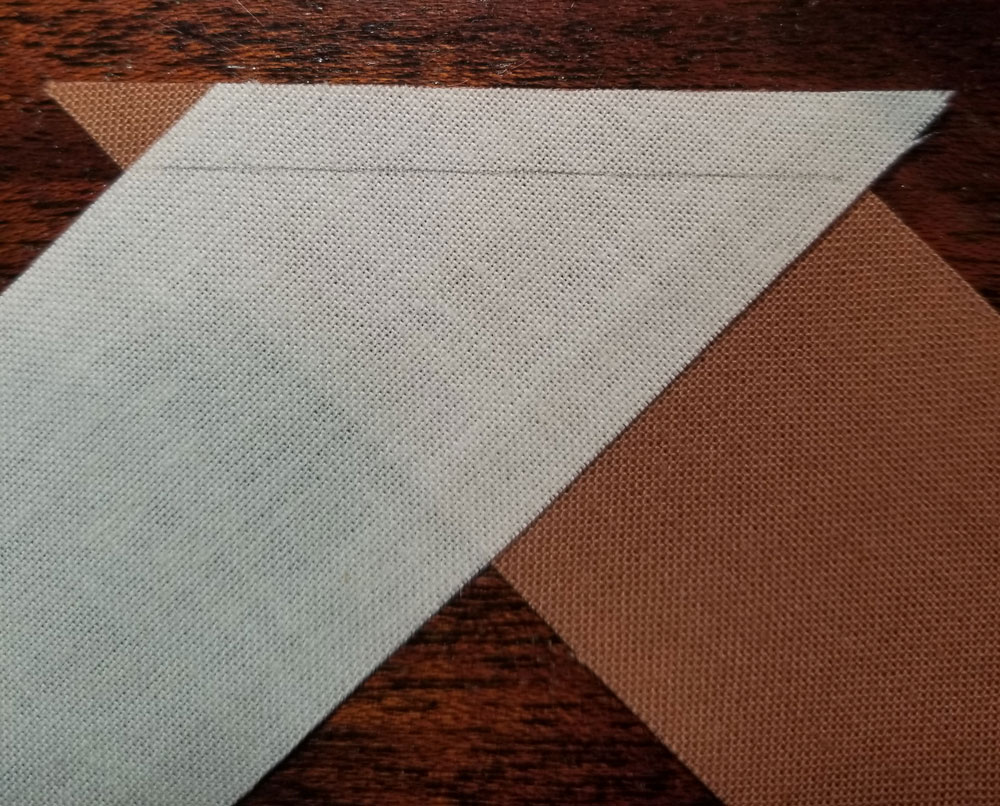
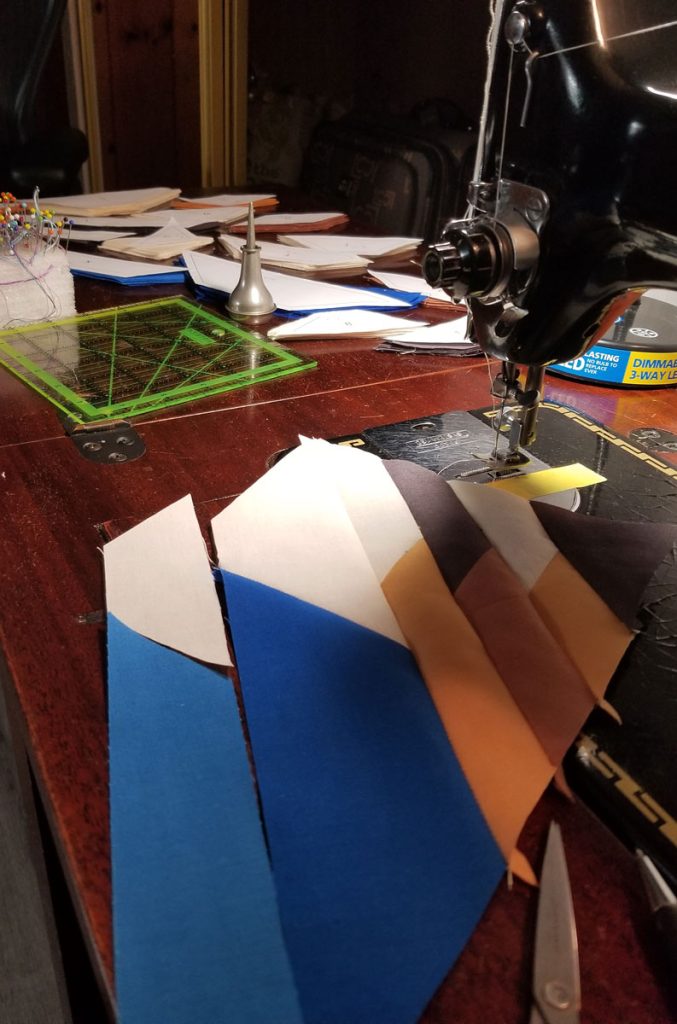

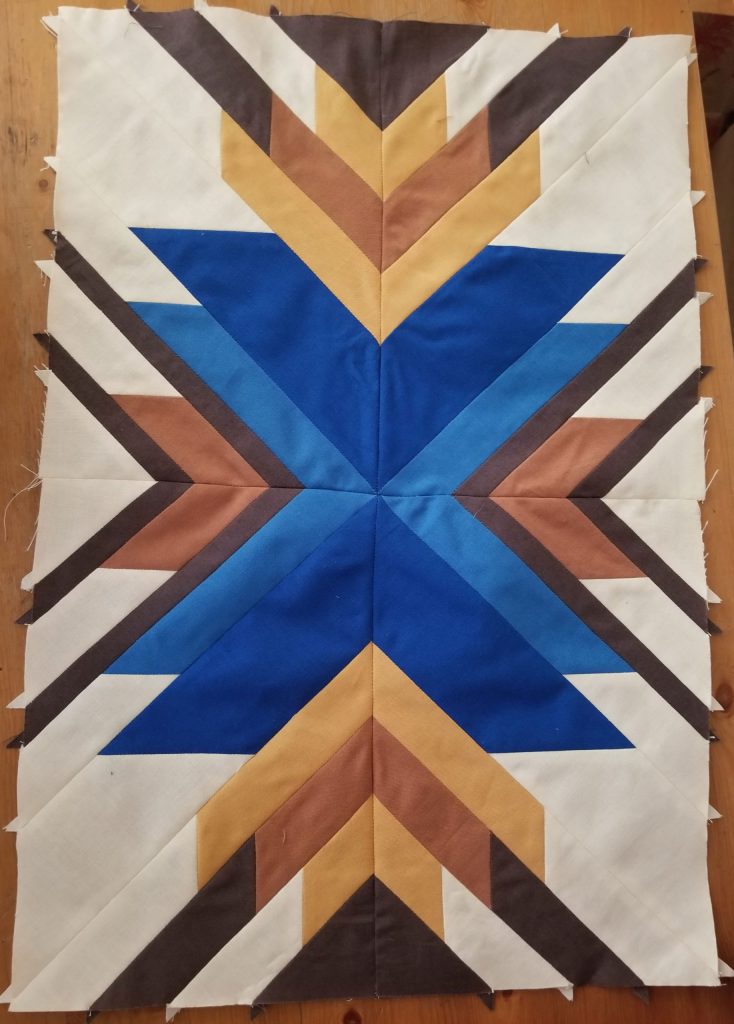
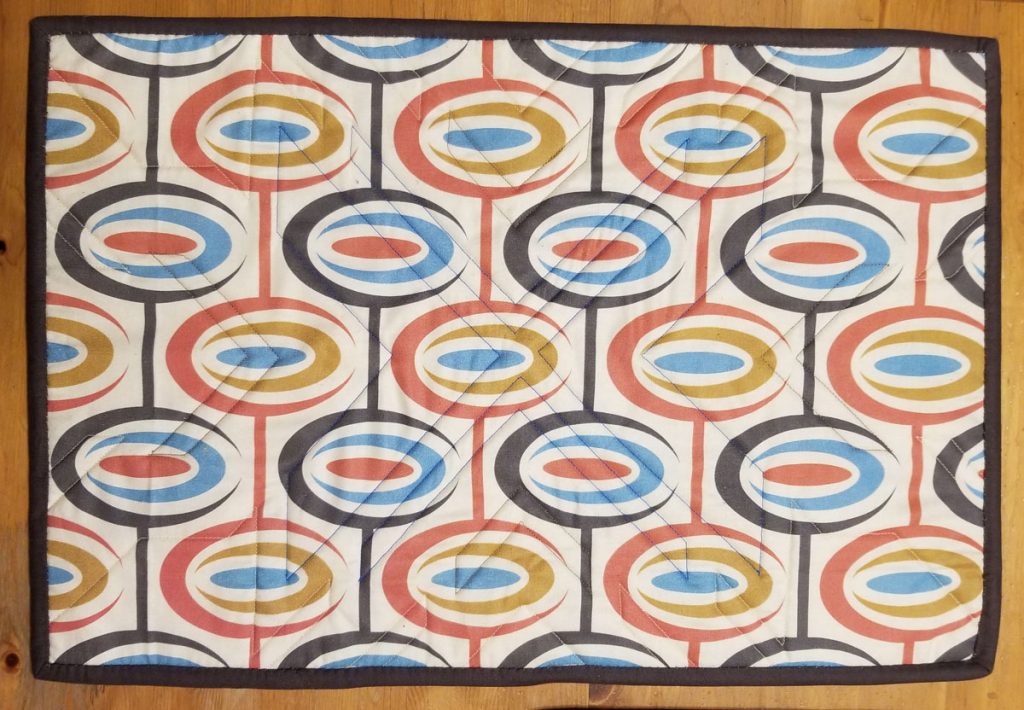

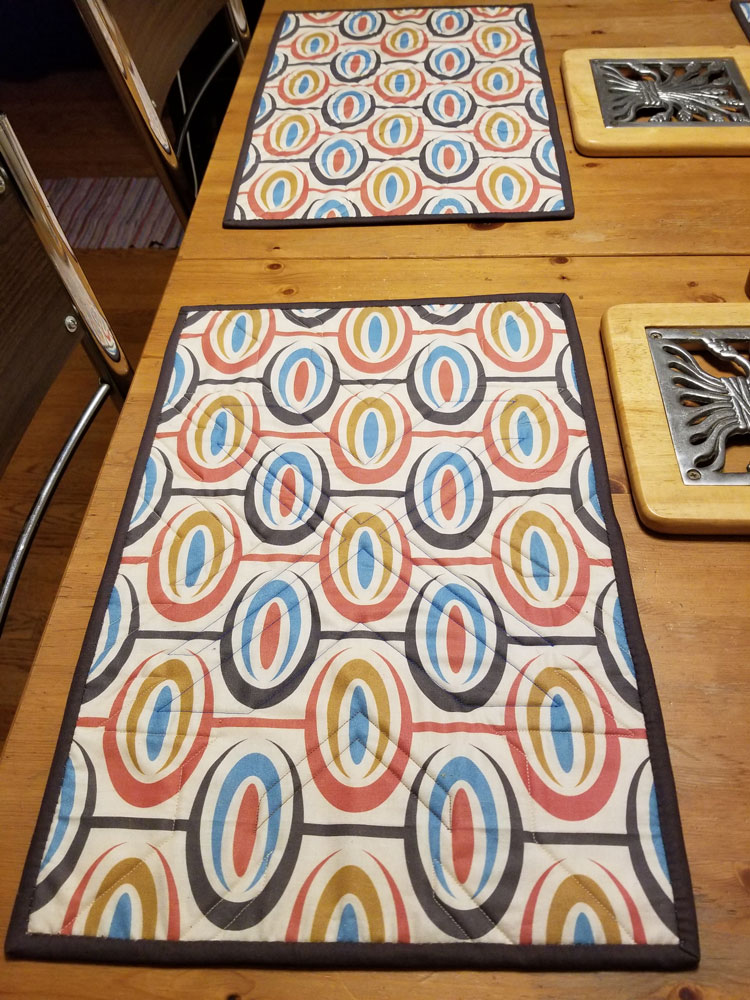
As you may guess, these placemats have purely aesthetic purpose, because the table is much easier to clean after a meal, while these placemats need to be washed and dried, maybe even ironed. They would make more sense if they were protecting a fancy tablecloth. When I was growing up, we had the plastic placemats that could be easily wiped if some food or drink dripped on them; they were protecting tablecloth and making crumbs easy to dispose of. But this is something else – impracticality for sake of beauty? I don’t know, but I’ll keep using them until they get too stained, then I’ll go ahead and make new ones.
If there’s any interest, I’ll be happy to provide the pattern, so feel free to drop a comment.